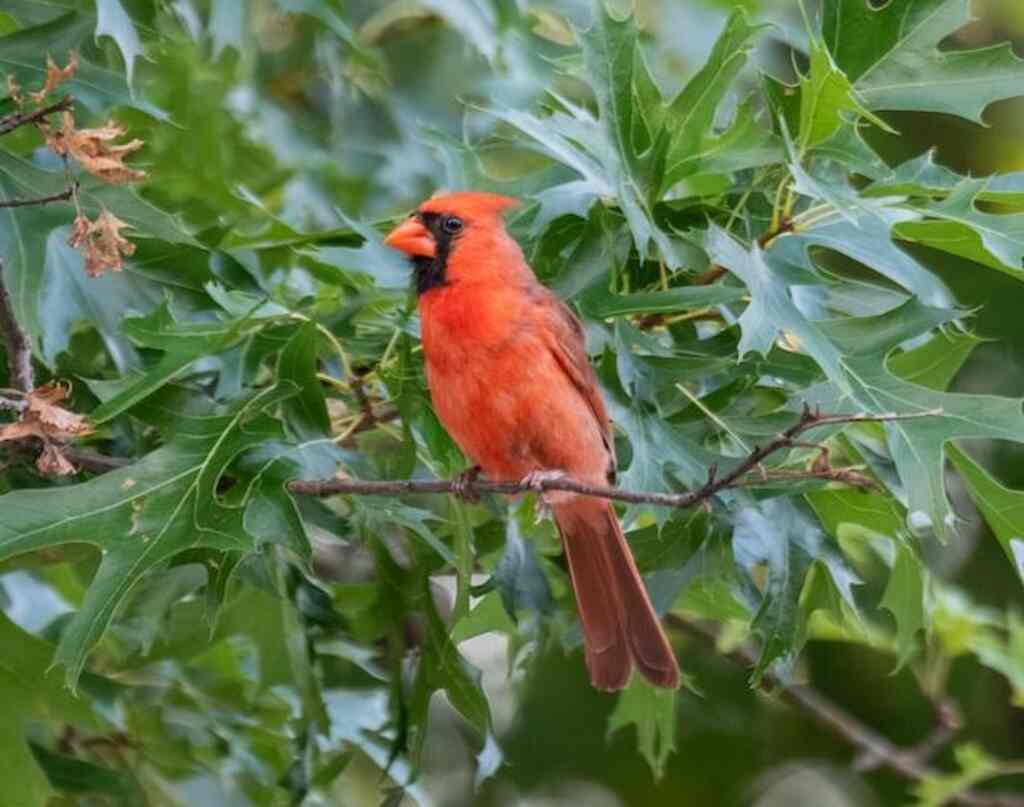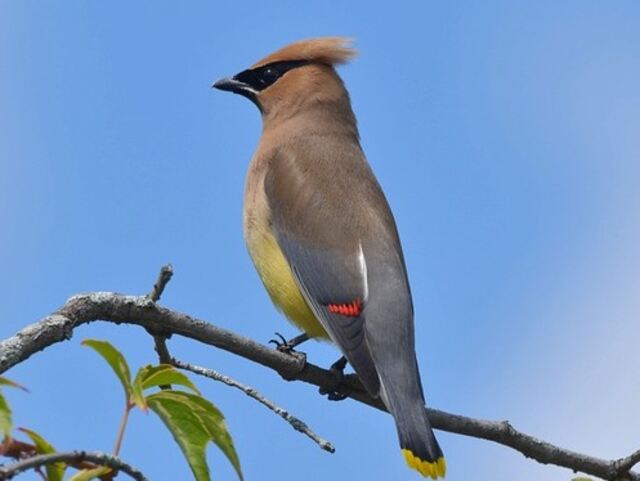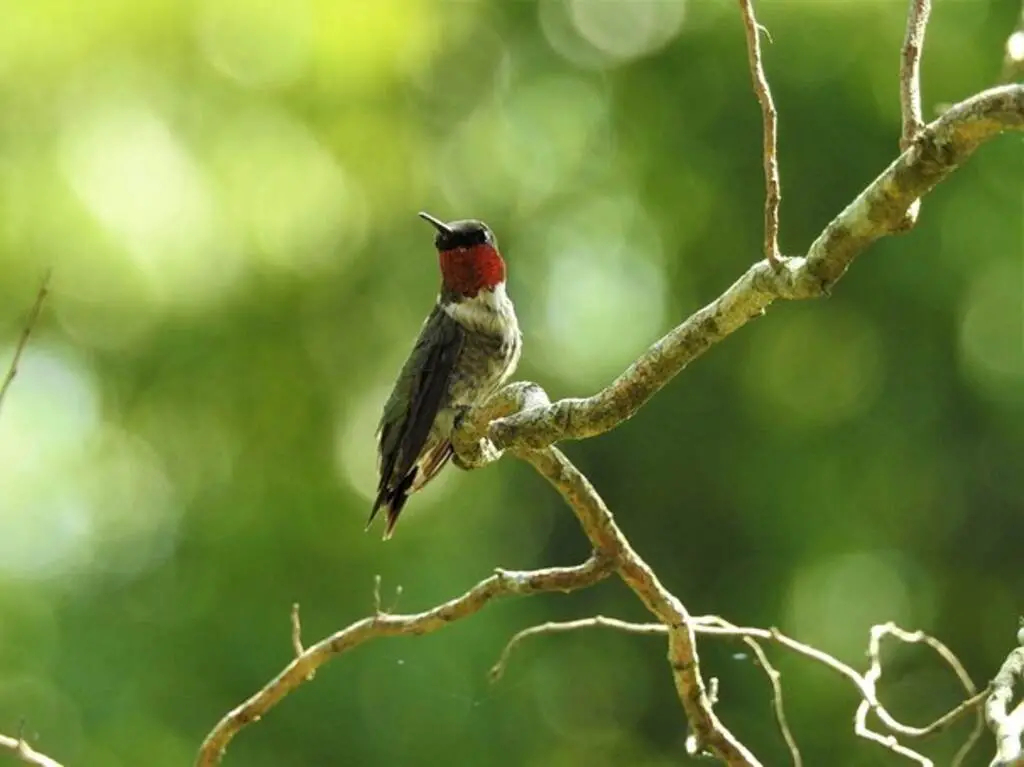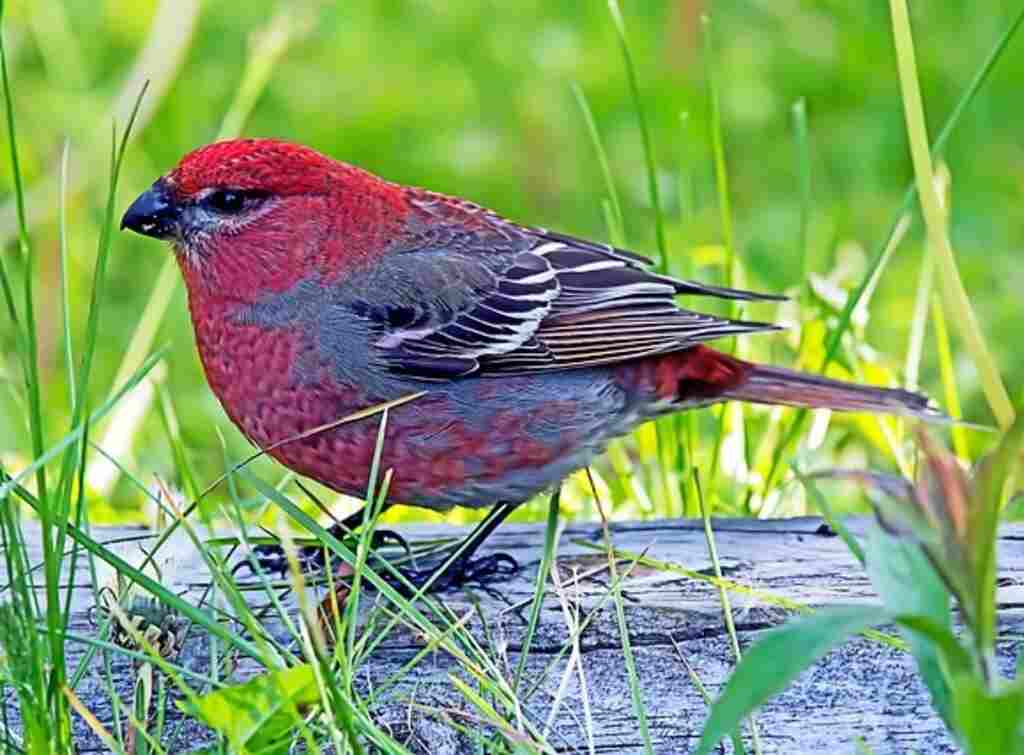Welcome to the diverse and picturesque state of Wisconsin, a paradise for birdwatchers. With its vast forests, wetlands, and river systems, this state boasts an impressive variety of bird species, making it an ideal destination for birding enthusiasts.
In this article, we will be exploring the top birdwatching hotspots in Wisconsin, from the serene Door County and the beautiful Horicon Marsh to the breathtaking Mississippi River Flyway and the vast Chequamegon-Nicolet National Forest.
Table of Contents
- 1 Key Takeaways:
- 2 Top Birdwatching Hotspots In Wisconsin
- 3 Why Wisconsin is a Birdwatcher’s Paradise
- 4 Door County: A Haven for Birdwatchers
- 5 Horicon Marsh: A Wetland Gem for Bird Lovers
- 6 Necedah National Wildlife Refuge: A Sanctuary for Rare Birds
- 7 Chequamegon-Nicolet National Forest: Exploring Wisconsin’s Wilderness
- 8 Kettle Moraine State Forest: A Birdwatcher’s Delight
- 9 Mississippi River Flyway: Witnessing Majestic Migrations
- 10 Conclusion
- 11 FAQs: Top Birdwatching Hotspots In Wisconsin
- 11.1 What are the top birdwatching hotspots in Wisconsin?
- 11.2 Why is Wisconsin a birdwatcher’s paradise?
- 11.3 What are the best birdwatching locations in Door County?
- 11.4 What makes Horicon Marsh a great destination for bird lovers?
- 11.5 What can be found at the Necedah National Wildlife Refuge?
- 11.6 What bird species can be found in the Chequamegon-Nicolet National Forest?
- 11.7 What can birdwatchers expect to find in Kettle Moraine State Forest?
- 11.8 What can be witnessed along the Mississippi River Flyway in Wisconsin?
- 12 Author
Key Takeaways:
- Wisconsin offers a diverse range of habitats that attract a wide variety of bird species
- There are numerous birdwatching spots and trails throughout the state
- Door County, Horicon Marsh, Necedah National Wildlife Refuge, Chequamegon-Nicolet National Forest, and Kettle Moraine State Forest are among the top birdwatching locations in Wisconsin
- Wisconsin is an essential stop along the Mississippi River Flyway, a significant migratory route for birds

Top Birdwatching Hotspots In Wisconsin
Wisconsin is a popular destination for birdwatchers, with a variety of habitats that attract a diverse range of bird species. Some of the top birdwatching hotspots in Wisconsin include the Horicon Marsh, the Chequamegon-Nicolet National Forest, and the Apostle Islands.
These areas offer opportunities to spot a wide range of bird species, from raptors and waterfowl to songbirds and migratory species. Whether you’re an experienced birdwatcher or a novice, Wisconsin’s birdwatching hotspots are sure to provide a memorable experience.
Why Wisconsin is a Birdwatcher’s Paradise
Wisconsin is a haven for birdwatchers, thanks to its diverse habitats and landscapes that attract a wide array of bird species. From peaceful wetlands to vast wilderness areas, Wisconsin offers a range of environments that are ideal for birdwatching.
With more than 300 species of birds, Wisconsin is a birdwatchers’ paradise. From common birds such as the American robin and the Northern cardinal to more elusive species like the Piping Plover and the Whooping Crane, there’s always a chance to spot something rare and exciting.
One of the reasons why Wisconsin is an excellent destination for birdwatching is the extensive network of birding spots and trails available throughout the state.
From the shores of Lake Michigan to the banks of the Mississippi River, there are plenty of opportunities to observe birds in their natural habitat and learn about their behavior and migration patterns.
Why Wisconsin is a Birdwatcher’s Paradise
“Wisconsin is one of the best states in the country for birdwatching, thanks to its diverse habitats and the large number of bird species that inhabit the state.” – Roger Tory Peterson
Wisconsin’s burbling streams, rolling hillsides, and sprawling hardwood forests provide a rich and varied landscape that supports a wide range of bird species.
Birdwatchers can explore the state’s many protected areas, which include national forests, wildlife refuges, and state parks, to see species such as the Bald Eagle, Sandhill Crane, and Greater Prairie-Chicken.
One of the best things about birdwatching in Wisconsin is that it can be done throughout the entire year. In spring and summer, the state’s bird population swells as migratory species return to nest and breed.
Autumn brings a spectacular display of color as the leaves turn, providing a stunning backdrop for birdwatching.
Finally, in winter, the landscape transforms into a snowy wonderland, and birdwatchers can spot species such as the Snowy Owl and the Evening Grosbeak.
Overall, Wisconsin offers an excellent birdwatching experience for both casual observers and serious enthusiasts.
With its diverse habitats, extensive network of birding spots and trails, and large number of bird species, it’s no wonder that Wisconsin is known as a birdwatcher’s paradise.
Door County: A Haven for Birdwatchers
Door County, located on the eastern edge of Wisconsin, is a haven for birdwatchers, thanks to its diverse landscapes and habitats. The county boasts of its 300 miles of shoreline, towering bluffs, sandy beaches, and hardwood forests, which provide a home to a wide range of bird species.
There are several locations within Door County that are popular among birdwatchers. One of the top birding spots is the Ridges Sanctuary, a 1,600-acre nature reserve. The sanctuary features a blend of wetlands, uplands, and forests, providing habitats for over 225 bird species.
| Common Bird Species at Ridges Sanctuary: | Other Bird Watch Areas in Door County: |
|---|---|
| Sandhill Crane, Pileated Woodpecker, Bald Eagle, Barred Owl, Turkey Vulture | Peninsula State Park, Cave Point County Park, Nelson-Trevino Wildlife Preserve, Potawatomi State Park, Whitefish Dunes State Park |
Another popular birdwatching location in Door County is the Horseshoe Bay Farms, a 575-acre site featuring a blend of prairie, forest, and wetlands. It is home to several rare bird species, including the Prothonotary Warbler and the Yellow-crowned Night Heron.
Birdwatching Tips in Door County
“To maximize your birdwatching experience in Door County, it is recommended to visit during spring and fall migration seasons when many bird species pass through the area.”
Door County’s vast birdwatching opportunities, paired with its breathtaking scenery and unique charm, make it a must-visit destination for any bird enthusiast.
Horicon Marsh: A Wetland Gem for Bird Lovers
Horicon Marsh is one of the largest freshwater cattail marshes in the United States, and it offers some of the best birdwatching opportunities in Wisconsin. Located in Dodge County, this wetland attracts over 300 bird species throughout the year, including rare and endangered species.
Visitors can explore the marsh by foot on the many trails available, or by boat on the Horicon Marsh Boat Tours. The best times to visit for birdwatching are during the spring and fall bird migrations.
Some of the bird species that can be spotted at Horicon Marsh include bald eagles, sandhill cranes, great blue herons, trumpeter swans, and various waterfowl species. The marsh is also home to several species of rails, including the endangered yellow rail.
If you’re planning a visit to Horicon Marsh for birdwatching, there are a few tips to keep in mind. It’s best to arrive early in the morning or late in the afternoon when birds are most active.
Bring binoculars and a field guide to help with identification. And remember to stay on designated paths and trails to protect the fragile ecosystem of the marsh.
Necedah National Wildlife Refuge: A Sanctuary for Rare Birds
The Necedah National Wildlife Refuge is a protected area in Wisconsin that features a range of habitats, including wetlands, forests, and grasslands. This diversity of habitats attracts a variety of bird species, including rare and endangered ones.
The refuge is particularly known for its population of sandhill cranes, whooping cranes, and trumpeter swans, which can be seen throughout the year.
If you are interested in birdwatching, guided tours are available throughout the refuge. These tours are led by experienced guides who can help visitors spot the various bird species that inhabit the refuge.
Some of the popular birdwatching spots within the refuge include the observation tower at the visitor center, the Heron and Egret Trail, and the Whooping Crane Exhibit.
Visitors are encouraged to follow best practices for birdwatching, including staying on designated trails, keeping a safe distance from birds, and avoiding disturbing their habitats.
Chequamegon-Nicolet National Forest: Exploring Wisconsin’s Wilderness
The Chequamegon-Nicolet National Forest in northern Wisconsin is a vast wilderness area, covering over 1.5 million acres of land. The forest is home to a diverse range of habitats, including lakes, streams, wetlands, and forests, making it an ideal destination for birdwatchers.
The forest is home to over 240 bird species, including the bald eagle, great blue heron, and American woodcock. Birdwatchers can explore the forest using hiking trails, which offer stunning views of the forest and its wildlife.
The forest’s northern unit is an excellent spot for birdwatching during the spring and summer months, when migratory birds return to the area. The southern unit is known for its diverse range of wooded habitats, including maple and oak forests, and is home to bird species such as the ruffed grouse and pileated woodpecker.
Birdwatchers visiting the Chequamegon-Nicolet National Forest should come prepared with the proper gear, including binoculars, a bird identification guide, and sturdy hiking shoes. It’s also important to follow Leave No Trace principles and respect the wildlife and habitat.

Kettle Moraine State Forest: A Birdwatcher’s Delight
The Kettle Moraine State Forest is a haven for birdwatchers, with two units – the Northern and Southern units – offering exceptional birdwatching experiences.
The Northern unit features unique geological features such as glacial kettles and kames, while the Southern unit boasts rolling hills and lush forests. Both units provide varied habitats for a wide range of bird species.
Visitors to the Northern unit can spot birds such as the Scarlet Tanager, Blackburnian Warbler, and Blue-headed Vireo. Meanwhile, the Southern unit is home to the American Woodcock, Cerulean Warbler, and numerous species of woodpeckers.
The Kettle Moraine State Forest also features several birding trails that lead visitors through the forest’s diverse landscapes, including the Greenbush Trail System, the Scuppernong Trail, and the Ice Age Trail.
Birdwatching Tips for the Kettle Moraine State Forest
- Visit during the spring and fall migration seasons for the best chance of spotting a diverse range of bird species.
- Bring binoculars and a field guide to help identify birds.
- Wear comfortable shoes and clothing appropriate for hiking through varied terrain.
- Respect wildlife and their habitat by keeping a safe distance and avoiding disturbing nesting birds.
Mississippi River Flyway: Witnessing Majestic Migrations
The Mississippi River Flyway is one of the most critical migratory routes for birds in the Western Hemisphere, and Wisconsin is a prime location to witness the migrations. During spring and fall, millions of birds travel through this flyway, making it an unforgettable experience for birdwatchers.
Along the Wisconsin stretch of the river, there are multiple locations where bird enthusiasts can witness this majestic event. One such place is the Trempealeau National Wildlife Refuge, which has its own bird-watching trail and observation deck.
The Upper Mississippi River National Wildlife and Fish Refuge is another ideal location to watch the migrations. The refuge provides a habitat for a vast range of bird species, including bald eagles, peregrine falcons, and trumpeter swans.
Exploring the Mississippi River Flyway: Practical Tips
If you’re planning to explore the Mississippi River Flyway, here are some practical tips to keep in mind:
- Visit in spring and fall to witness the migrations
- Bring a good pair of binoculars and a camera to capture the birds’ beauty
- Dress appropriately for the weather and bring comfortable walking shoes
- Respect the environment and the birds’ habitats
- Follow the park regulations and guidelines
By following these tips, you’ll have a more enjoyable and fulfilling experience exploring the Mississippi River Flyway.
Conclusion
Wisconsin offers diverse birdwatching opportunities for enthusiasts of all levels. From wetlands and state parks to national forests and scenic rivers, the state boasts an impressive range of habitats and bird species.
Whether you’re a seasoned birder or a beginner, Wisconsin’s birdwatching hotspots have something unique to offer.
By exploring Door County’s popular birding locations, watching rare birds at the Necedah National Wildlife Refuge, or observing migratory species along the Mississippi River Flyway, you’ll experience the beauty of birds in their natural habitats.
Practical tips and advice, such as the best time to visit certain locations and what bird species to expect, will help you plan an enjoyable birdwatching trip.
So next time you’re planning a birdwatching excursion, consider exploring the top Wisconsin hotspots for a memorable experience. You never know what feathered friends you might encounter along the way!

FAQs: Top Birdwatching Hotspots In Wisconsin
What are the top birdwatching hotspots in Wisconsin?
The top birdwatching hotspots in Wisconsin include Door County, Horicon Marsh, Necedah National Wildlife Refuge, Chequamegon-Nicolet National Forest, Kettle Moraine State Forest, and the Mississippi River Flyway.
Why is Wisconsin a birdwatcher’s paradise?
Wisconsin is a birdwatcher’s paradise due to its diverse habitats and landscapes that attract a wide range of bird species. It also offers an extensive network of birding spots and trails throughout the state.
What are the best birdwatching locations in Door County?
Door County offers several popular birdwatching locations, including parks, nature reserves, and migratory bird stopover sites.
What makes Horicon Marsh a great destination for bird lovers?
Horicon Marsh is a famous wetland in Wisconsin that attracts a variety of bird species. It offers birdwatchers the opportunity to spot unique wetland bird species and provides tips for the best times to visit.
What can be found at the Necedah National Wildlife Refuge?
The Necedah National Wildlife Refuge is a protected area in Wisconsin known for its diverse bird population, including rare and endangered bird species. Guided birdwatching tours are available in the area.
What bird species can be found in the Chequamegon-Nicolet National Forest?
The Chequamegon-Nicolet National Forest is home to various bird species. The forest’s diverse habitats provide opportunities to spot a range of bird species, and practical tips are provided for birdwatchers exploring the area.
What can birdwatchers expect to find in Kettle Moraine State Forest?
The Kettle Moraine State Forest, divided into Northern and Southern units, offers exceptional birdwatching experiences. The forest’s unique geological features attract different bird species in each unit.
What can be witnessed along the Mississippi River Flyway in Wisconsin?
The Mississippi River Flyway is a crucial migratory route for many bird species. Along the Wisconsin stretch of the river, birdwatchers can witness majestic bird migrations and enjoy excellent birdwatching opportunities.




